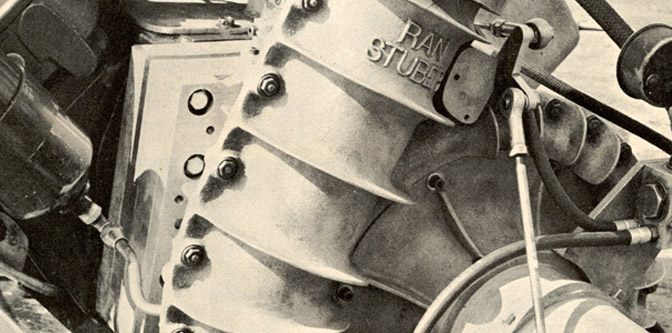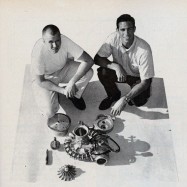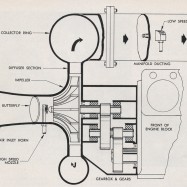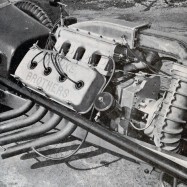The Stubercharger

During the Golden Age, drag racing was an adrenaline-fueled equation of grit and gears mashed with courage and calculation. Ron Stuber knew that. But rather than simply gunning for the traps with the tires smoking, he felt the need to build a product that would trump the quintessential go-fast component — the GMC 6-71 supercharger.
Sounds like a harebrained plan, doesn’t it? According to the October 1963 issue of Popular Hot Rodding, Stuber began drafting plans for a centrifugal blower in 1956. By 1959, he hooked up with 18-year-old Bob Chernow to build the first operational prototype Stubercharger, dubbed the “Mark I.�?
The Stubercharger was a then-revolutionary forced-induction setup that mounted directly to the front of the engine block. Featuring a bird-gulping air inlet and injector nozzle poking out of the spiral casing, the massive ribbed setup shrouded the pièce de résistance — a seven-inch impeller allegedly tested up to 100,000 rpm.
With a questionably low 4.9-to-1 compression ratio, an ever-thirsty engine running a Stubercharger yearned for non-detonating fuel. In the case of the “Mark I,” a methanol-water cocktail was used.
Unlike a roots-type blower, the Stubercharger would distribute the horses throughout the power curve. Put simply, it would prevent cars from obliterating the tires off the line with hopes of saving some juice for the top end. And PHR had the graphs to prove it (sic).
Stuber and Chernow weren’t alone in the alternative supercharger game. The often-discussed Turbonique, Inc. developed their own versions to supplement their infamous Drag Axle. These included “AP�? units, such as the liquid-fueled Model C-4-AH and solid-fueled Model X-2-AP.
Unfortunately, these highly complex huffers were expensive to produce and weren’t known for their reliability. A complete “Mark III�? Stubercharger setup was projected to cost $1200 in 1963.
At the dragstrip, rapidly rotating impellers fueled urban-legends for more than half a century. From Jocko Johnson’s streamliner decimating its bodywork to a fiery end for a southern-grown Mustang, hot rodders across the nation are quick to pull out a tale of dragstrip experimentation pushed too far. Believe it or not, the NHRA wasn’t enthused.
Although the Stubercharger never caught on with the masses — whether the “Mark III�? ever made it into production remains a mystery — it illustrated the abundant creativity mixed with research to build something capable of straining the limits of man and machine a quarter mile at a time.
-Joey Ukrop
Photos courtesy of PHR, Oct. 1963






